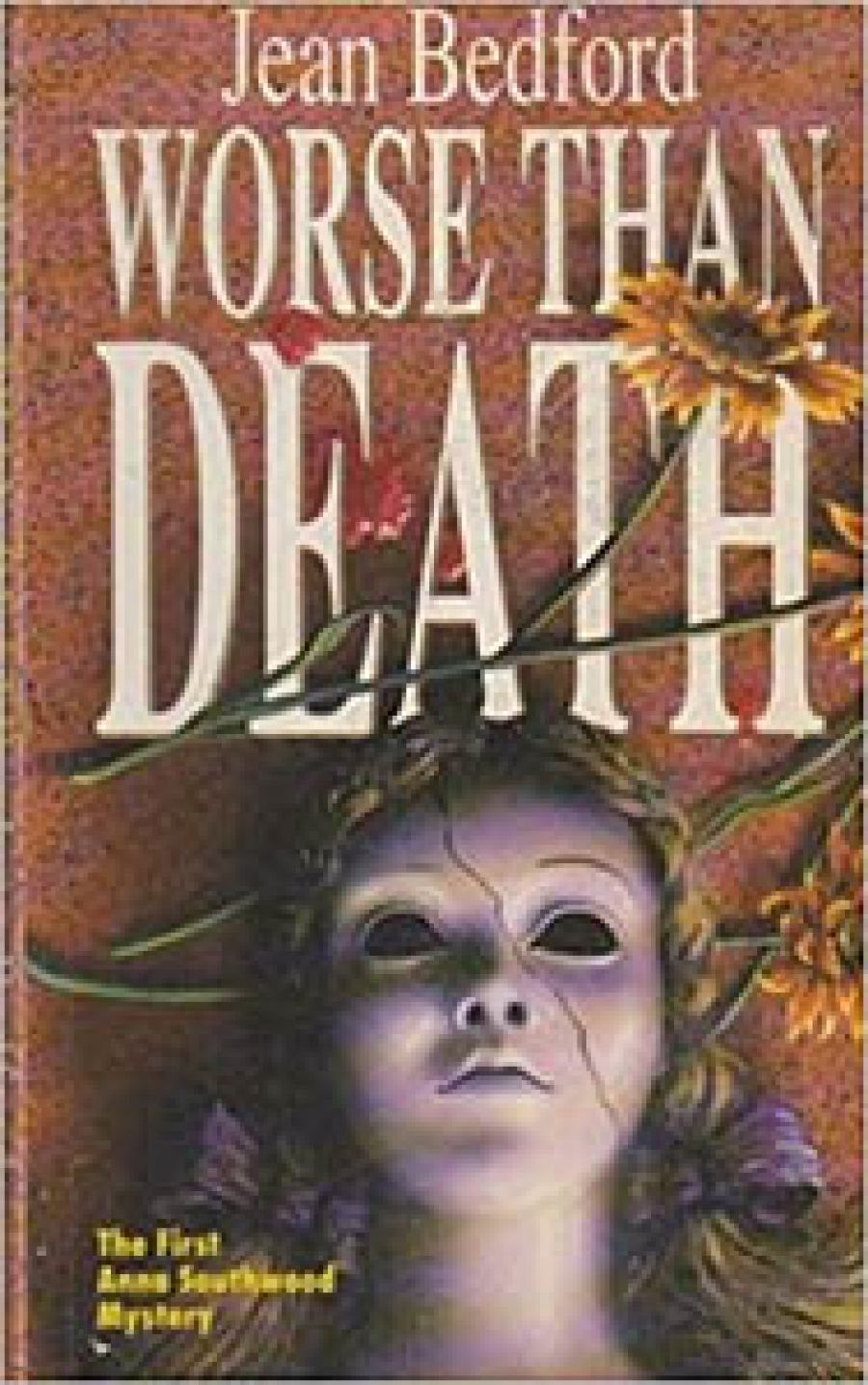
- Free Article: No
- Contents Category: Fiction
- Review Article: Yes
- Article Title: Out to lunch
- Online Only: No
- Custom Highlight Text:
The publisher’s blurb for Worse Than Death notes that the book is ‘a long awaited move across genres for Jean Bedford’. A backhanded compliment, but no doubt sincerely meant. As it happens, the first Anna Southwood mystery is a pretty lacklustre effort – far from the ‘tight and pacy read’ promised by this same blurb.
Anna Southwood, a tomboy type with – you guessed it – unruly red curls – has set herself up as a private investigator after the death of her husband. He has made a quid or two from shady deals, she has time on her hands, a career in mind and a mate with a PI’s licence.
- Book 1 Title: Worse Than Death
- Book 1 Biblio: Collins Blacklist, $9.95 pb
Anna is surprised, as indeed is the reader, when a wealthy businessman hires her, despite her singular lack of qualifications, to look for his missing daughter. The police have charged the girl’s mother with her murder, although they have neither body nor motive nor evidence. (The collaborating author is a criminal lawyer, so one must assume this is all in order.)
Anna’s friend Lorna is an investigative journalist, which leads Anna into a sticky situation with a group of thugs who deduce, wrongly, that her investigations have something to do with her friend’s investigations into graft and corruption in high places. At the end of the book, Anna guesses what has happened to the daughter. No attempt is made to disguise the guess as deduction – she just has a hunch. Of course we all know that fictional detectives manage an awful lot of lucky guesses, but even the weakest crime writers, Agatha Christie among them, manage to create the impression that a process of investigation and deduction has taken place.
Australia’s newest female private eye just lunches a lot, introspects even more, then takes a lucky guess.
What makes the book even more irritating is the self-conscious scene-setting and characterisation that is the almost inevitable by-product of the use of first person. Also, especially if the hero is a Balmain-dwelling, warm-hearted, intelligent but self-deprecating new woman, it seems to be impossible for the writer to avoid injecting her own persona into the story. In this instance, we are offered a range of extraneous information about food (Thai), wine (the right labels) and clothes (trendy but good quality and expensive) which seems to be designed more to establish the writer’s inner-urban credentials (‘I know how to pronounce Chinotto’) than to contribute to the characterisation of the female lead. We are even subjected to a walk down Lygon Street, Carlton, which is so spoiled nowadays and hasn’t been the same since Tamani’s changed hands (as we all know). It’s guff. If I had my way I’d insist that all Australian crime novels for the next ten years be written in the third person and be set in Broadmeadows or Noarlunga.


Comments powered by CComment